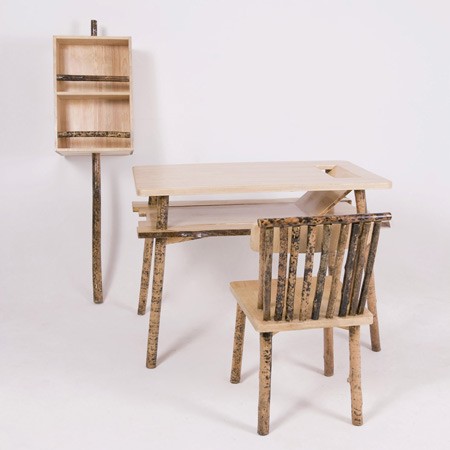
Unhidden by Leon Li and Ryan Ran
Design students Leon Li and Ryan Ran have designed a range of wooden office furniture incorporating tree branches.
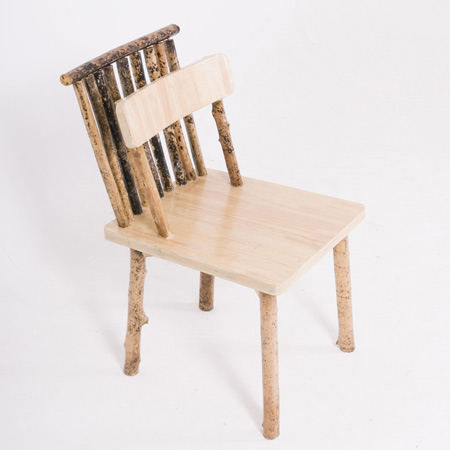
Called Unhidden, the collection includes a desk with shelf below the top surface, a chair with an extra back for hanging bags and coats, and a storage unit supported by one pole.
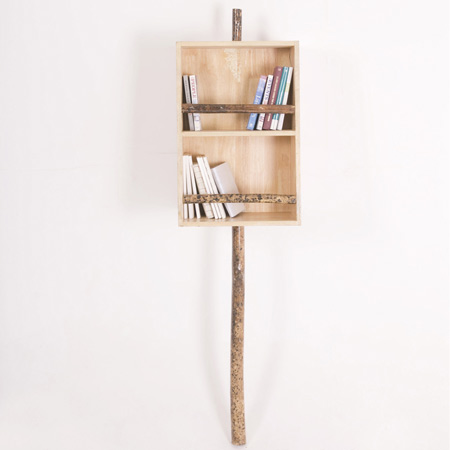
The collection was nominated for a Roche Bobois Design Award last year.
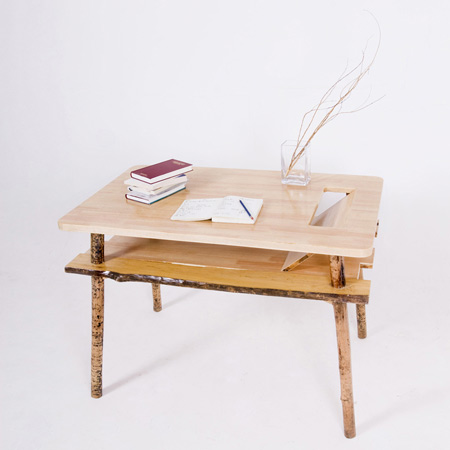
Here's some more information from the designers:
About “hide”, there are 3 meanings: The design elements which hide in the objects, the design consciousness which hide in people’s minds and our implicative design methods.
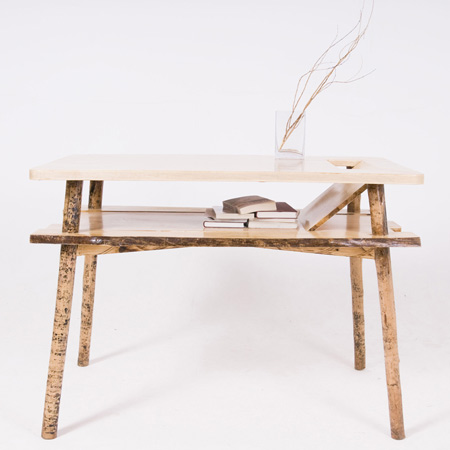
In our mind, design is not only some professional skills, normal people could also do “design” via some common behaviors, that’s what we called “hidden design”. We wish our design could unhide such “hidden design”, that is why we called our design “unhidden design”.
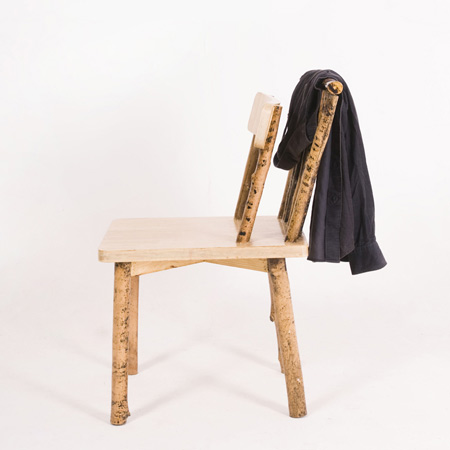
We also hope our “unhidden design” could lead people to find the other design hidden in their lives, and than they would be willing to discover the hidden stories and happiness in normal life.
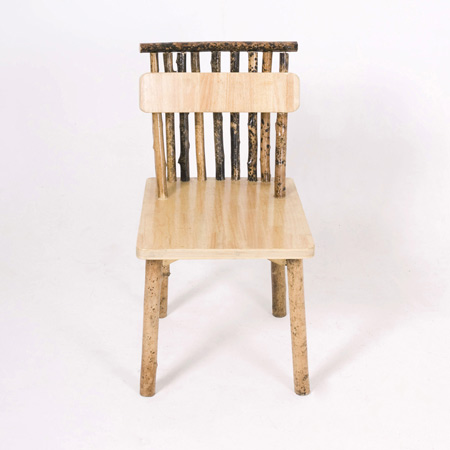
We all know the chair-back is designed for us to lean against, we still often put our clothes or bags on the chair-back naturally when we back home.
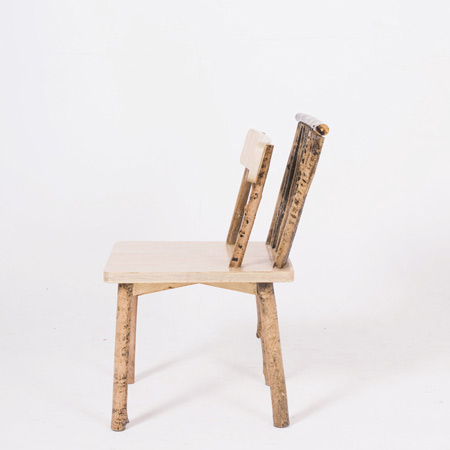
This behavior shows the other function of the chair-back in some extent and turns the chair-back to a temporary clothes rack.
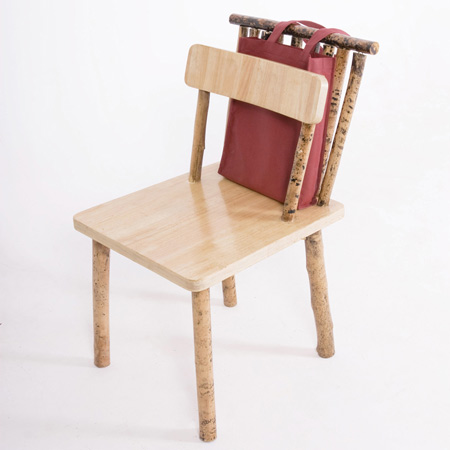
We think every objects have the similar hidden functions, and the normal behavior of people will uncover such hidden design elements and make a “new design” unconsciously. We called it hidden design.
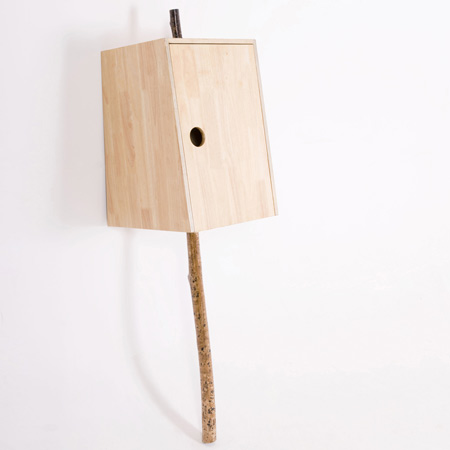
We wish our design could be considered as Chinese Design. We also wish people could know Chinese via our design. We consider “hide” as one of the characteristics of traditional Chinese.
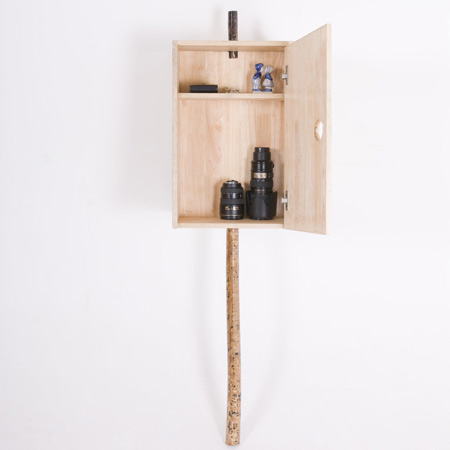
This word -“hide” means implicit or indirect. For instance, traditional Chinese do not like express their feeling directly, they would like to express their feeling or thinking via some other things.
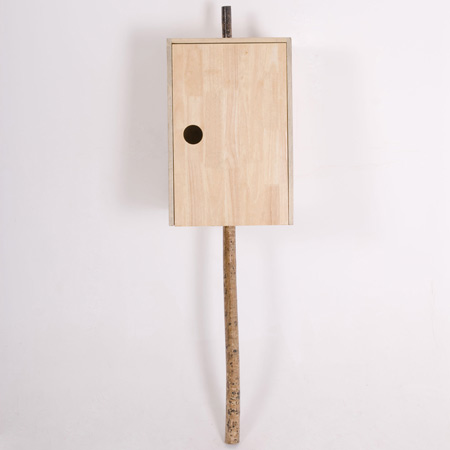
So, we also don’t show the hidden functions of the objects directly. For example, we do not design the chair back into the shape of clothes rack in order to tell you that the chair back have the function of hanging clothes. Instead, we give the normal chair an extra chair back.
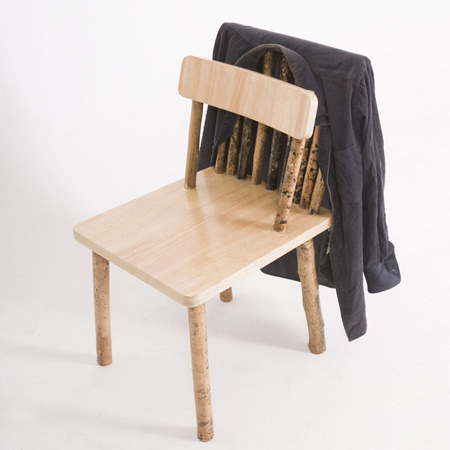
People may find that interesting or strange when they see this 2back chair, and then, may be they will think about the extra back, and to find the hidden things by themselves. We use this way to hide what we do not want to hide, and to show what we want to show.
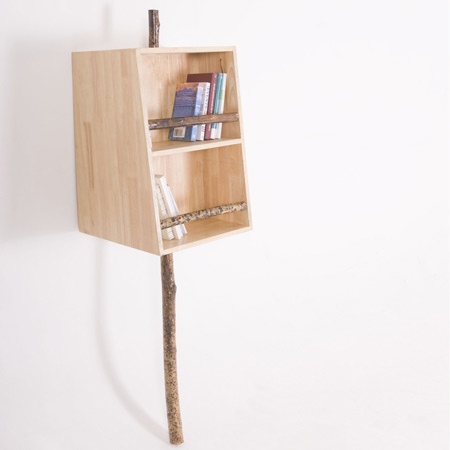
This is also a characteristic of Chinese “hide”: we Chinese use “hide” to “show”. We wish people could change their lives by design themselves rather than just buy some products to decorate their lives. We are still discovering about “hide” which is deeply hided.
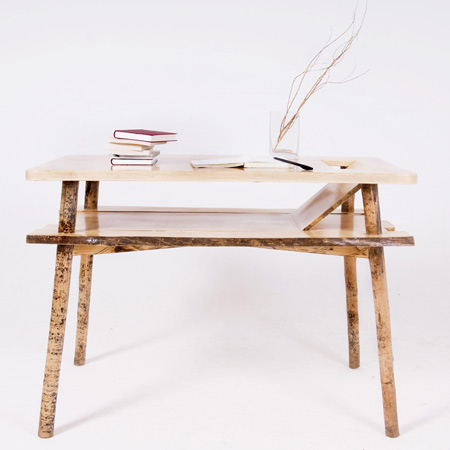
An extra chair-back will give your extra functions
A desk with a different drawer.
A cupboard for your secret.
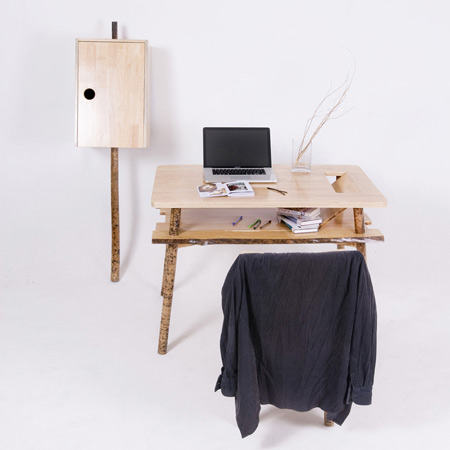
Everybody has some secrets to hide, the best way is to find a perfect cover. This cupboard have two sides, one is for daily use, that’s a cover. The other one against the wall keeps your secret. The only one leg of the cupboard makes it easy to rotate and also make the cupboard looks unsteady.
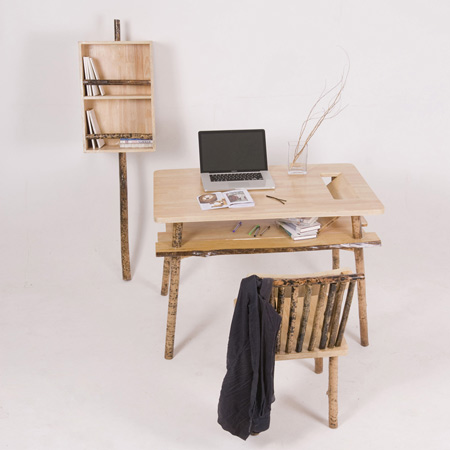
Nobody would like to take a risk to touch a cupboard which looks unsteady. If you even not willing to touch it, how could you find the secret in it? That’s why the secret could be remained in the cupboard.
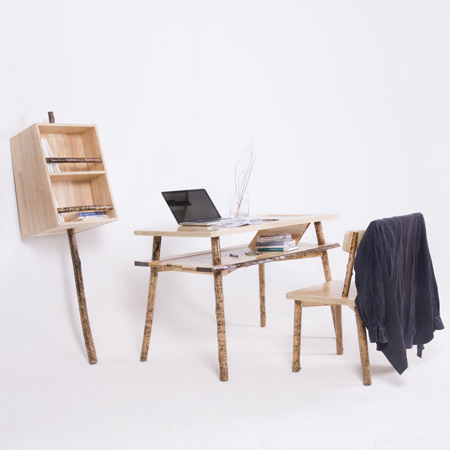
When you want to show the secret, you just need to rotate the cupboard and to show the other side. The materials of our furniture come from nature. There are two major materials, normal boards and limbs of Qingtan tree (Pteroceltis tatarinowii), a common species of elm in Jin county, AnHui province of China.
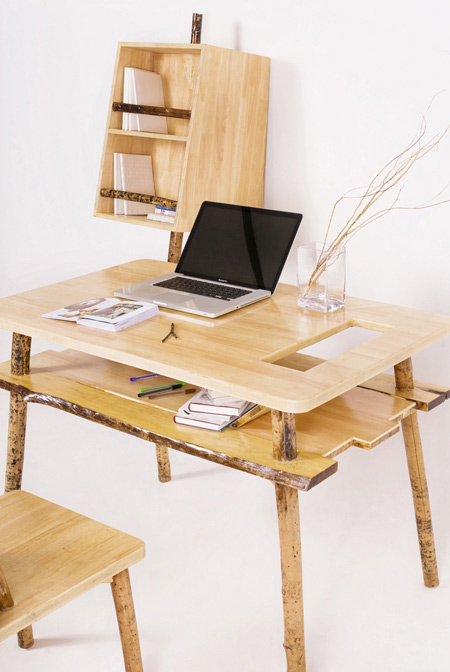
The twigs of Qintan were used as the main material to produce Xuan paper, while the limbs were often thrown away or simply fired as firewood. Actually, Qintan is a kind of straight and fine-grained wood. The locals abandon them because of the ugly mildew stain on its Skin. While we keep the mildew stain specially, because we consider them as truly natural skin. Thanks to the local geographic environment, the wood had been given such unique beauties.
See also:
.
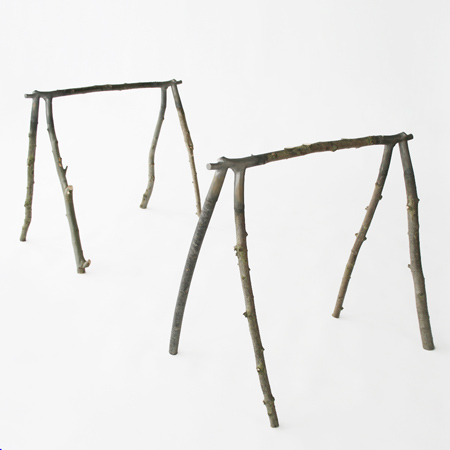 |
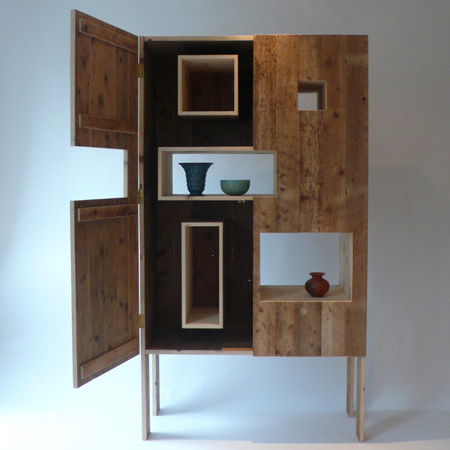 |
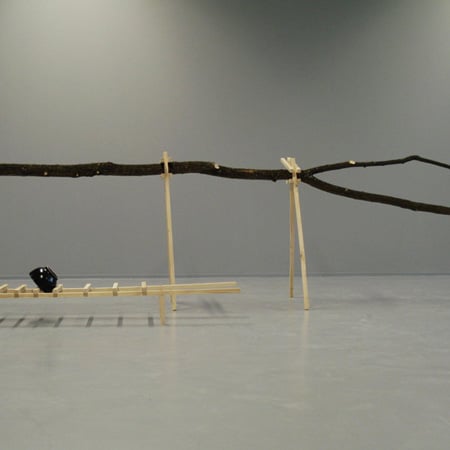 |
| Branch Out by Studiomama |
Reveal by Studiomama |
Vaisselier Système D by Matière A |